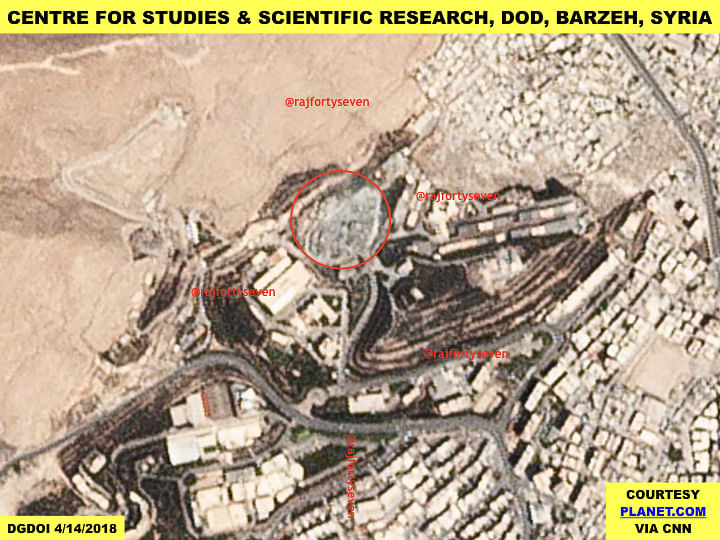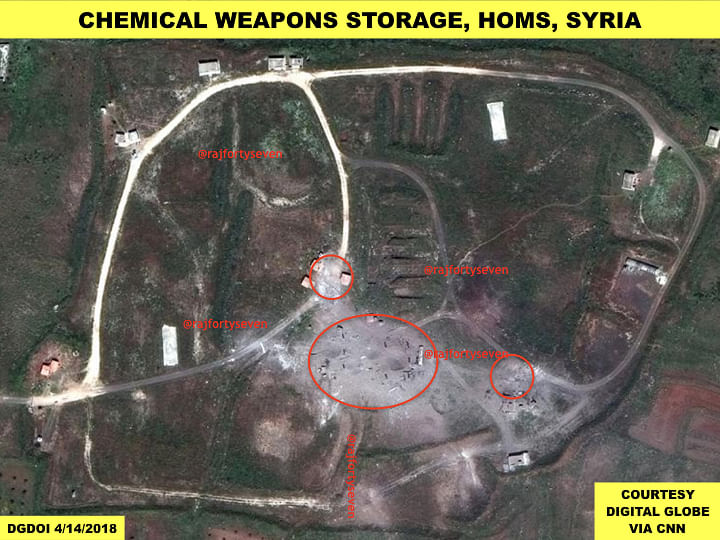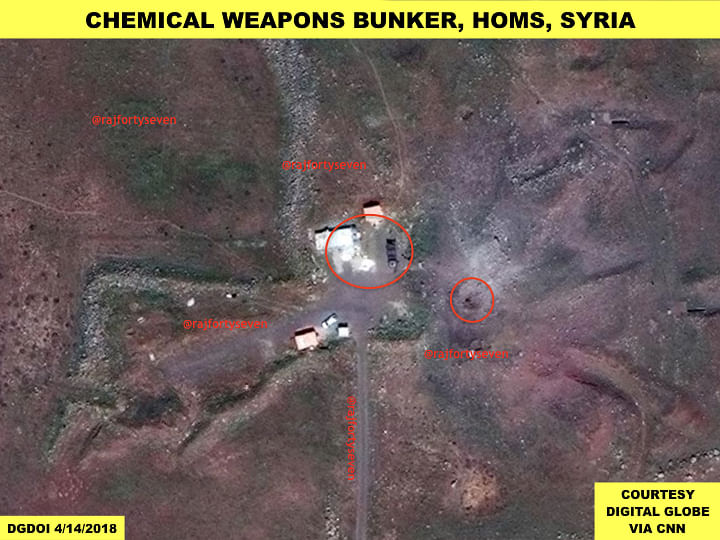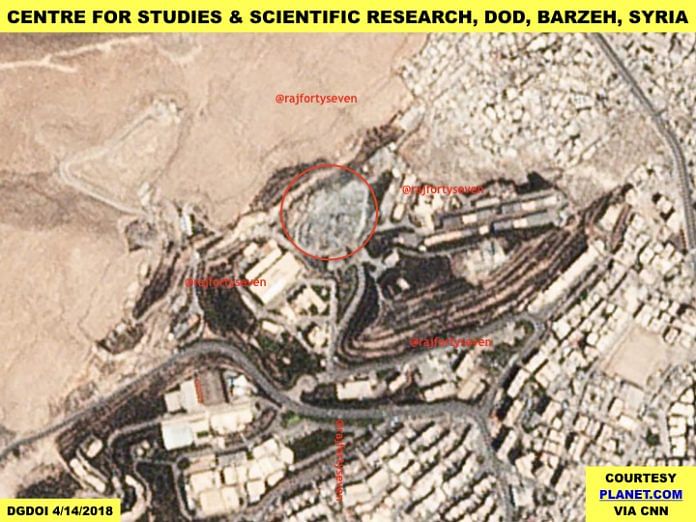Satellite images show Bashar al-Assad’s suspected deadly arsenal in and around Damascus; 100 missiles fired by the US-led coalition forces to destroy targets.
New Delhi: At least three targets were hit during the US-led coalition’s airstrikes against what was termed as chemical weapons storage facilities in Syria in retaliation for the Bashar al-Assad regime’s chemical attack in Douma, a suburb of Damascus, earlier this month.
The US alleged the Assad regime used at least one chemical agent on civilians, including women and children, on 7 April.
Two Mi-8 NATO codenamed Hip helicopters from Dumayr Airbase allegedly dropped yellow coloured compressed chlorine cylinders killing more than 34 civilians in the opposition-held Douma.
Satellite images analysed by ThePrint show the suspected chemical weapon research and storage facilities in Syria, which were hit by US missiles on 14 April.
The US coalition with Britain and France is blaming the Russian government for obstructing the UN from holding to account people using chemical weapons and not fulfilling its obligations as a member of the UN Security Council. Russians continue to support the Syrian regime with Iranians in the tow.
The strikes
Nearly 100 missiles, mostly Tomahawk, Storm Snow and JASSMER (Joint Air-to-Surface Standoff Missile-Extended Range) — the latter was used for the first time — were fired at 4 am on 14 April 2018.
The Syrian Arab Army, however, claimed that Syrian air defence was very effective and only seven missiles out of approximately 100 reached their targets.
According to open source count, 85-104 missiles were fired from sea and air platforms.
The targets
Chairman Joint Chiefs of Staff of the US, Gen Joseph Dunford, claimed three targets were hit with the aim of avoiding collateral damage to civilian lives and property.
The aim was to prevent Assad’s efforts of researching and producing chemical and biological weapons.
Centre for Studies and Scientific Research
The US-led coalition targeted the CSSR in Barzeh, Damascus, which was allegedly conducting research on chemical and biological agents to be used as weapons.

The three multi-storey concrete buildings, along with support buildings and parking sheds, were destroyed.
The Planet Labs imagery published in CNN report clearly indicates use of about 20-30 weapons in the strike.
Chemical weapons storage facility
The second target was an alleged chemical weapons storage facility, located 23 km west of Homs. It was a well-guarded double-fenced facility with revetments all around.

The three storage sheds of 12 m X 18 m and 12 m X 6 m were completely destroyed in possible laser-guided missile strikes.
The Planet Labs imagery published in the CNN report suggests that at least seven weapons were used in this strike.
Bunker and Command Centre
The third target, located 16 km west of Homs, was an old semi-underground bunker with three entrances. It was believed to be a chemical weapons bunker with command and communications equipment.

All the structures look safe except the main bunker. It appears that the target was not completely destroyed.
The Digital Globe imagery published in CNN report indicates a possible use of a minimum of five weapons.
The real target
The three targets claimed could have easily been destroyed with only one sortie of the B1-B bombers with JASSM ER missiles.
The question then remains as to why and what were almost 104 missiles used for? Considering about 40 missiles used on the three targets, an additional 60 missiles obviously had many different targets not yet revealed by the US government.
If the Russian claims are to be believed, these additional missiles struck the airports. Movement of Russian and Iranian aircraft to Hmeimim Airbase was also noticed shortly after the strikes.
The fourth target was probably bunkers and/or buildings used by self-styled Marshal Bashar al-Assad, the commander-in-chief of the Syrian Arab Armed Forces.
Col Vinayak Bhat (retd) is a Military Intelligence veteran of the Indian Army with vast experience of satellite imagery analysis. He has worked as Chinese interpreter and is a specialist on PLA and Pakistan’s Armed Forces. He tweets @rajfortyseven






